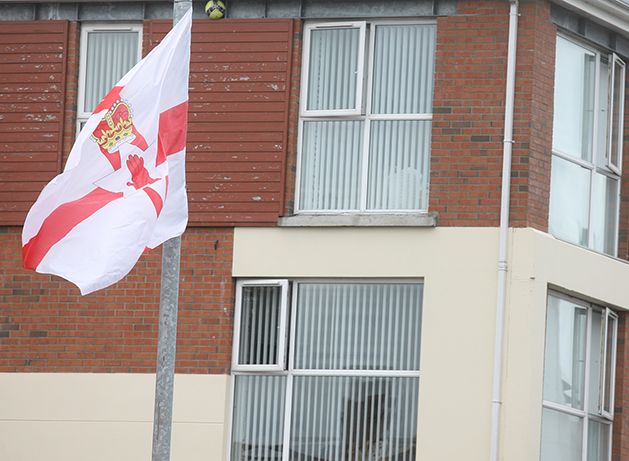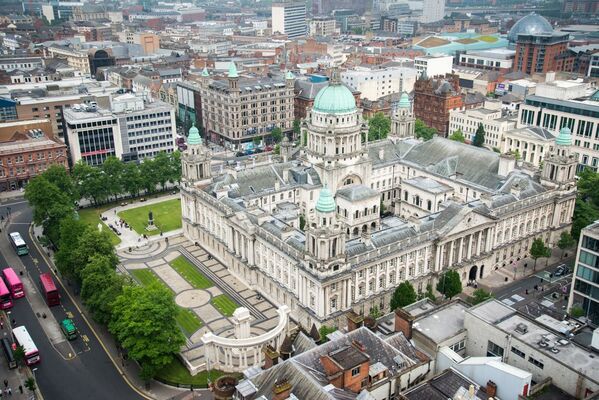THE annual charade that is the raising of loyalist flags at Finaghy crossroads has begun again, with residents complaining about what it does to the the quality of life and good relations in the area and businesses once more feeling the pinch as passing custom is deterred by the frankly vulgar sectarian display.
Those putting up the displays – and the silent local political reps who support them by their silence – make no attempt to acknowledge the rapidly changing demographic and social change that has taken place in recent years, to the point where a once strongly unionist district has seen the political and religious realities on the ground change Finaghy for ten months of the year into a relatively positive example of what good cross-community relations could and should look like in a now very mixed area. Indeed, not only is the erection of the flags a refusal to acknowledge the facts on the ground, it is a desperate and thoroughly negative attempt to stop the irreversible process of non-unionist/Protestant families of various faiths and colours from moving into a pleasant and bustling residential and commercial area.
Last week in Belfast the DUP were across the media complaining bitterly about Sinn Féin putting up bilingual road safety signs in North Belfast (the English part of the sign being very considerably larger than the Irish part). But across the city and across the North, all the unionist parties are guilty of standing idly by while the marching season that they hold up as a rich and central part of their culture is turned into a bitter, angry and elongated series of confrontations across the city and across the North. The loss of privilege and hegemony is a challenge for unionism in many facets of life here, but perhaps nowhere is it more depressingly and obviously on show than in the continued attempts to prove that ‘loyal Ulster’ is pickled in some kind of 1950s summer time-warp where Catholics keep putting their heads down and Protestants keep doing whatever they like.
That’s very far from the reality and the fact is that the extent of change has meant that the number of neighbourhoods where there is yearly rancour over flags and symbols is dwindling with every passing year. That is to be welcomed, but that unfortunately means that those areas where flags are still a source of controversy and division are being increasingly invested with an Alamo-style no-surrender importance at a time when unionism is undergoing an existential crisis of confidence and belonging by the territorial and commercial outworkings of the Brexit debacle.
As usual, those within local communities who are interested in harmony and cohesion will continue to approach such matters with a degree of understanding and patience. Those who insist on ignoring reality, meanwhile, are faced with a choice: Keep pretending things haven’t changed and get forced into changing; or finally acknowledge that the only way to gain is to give.






